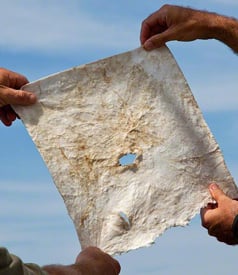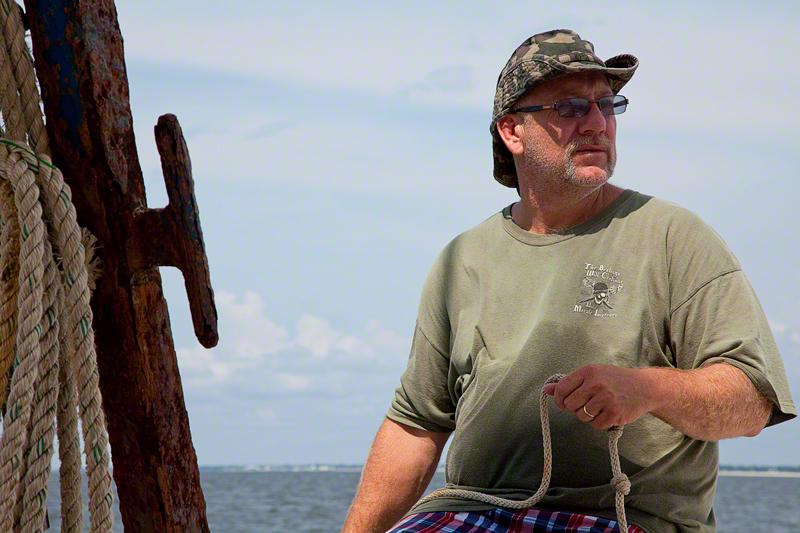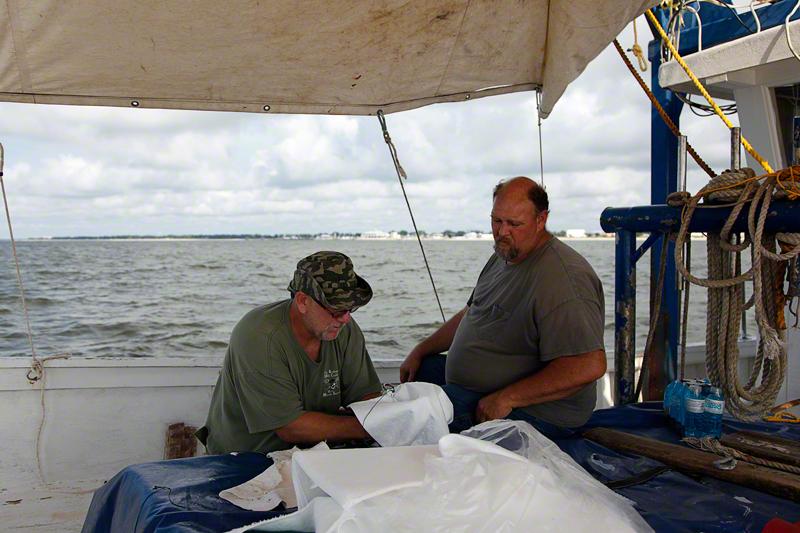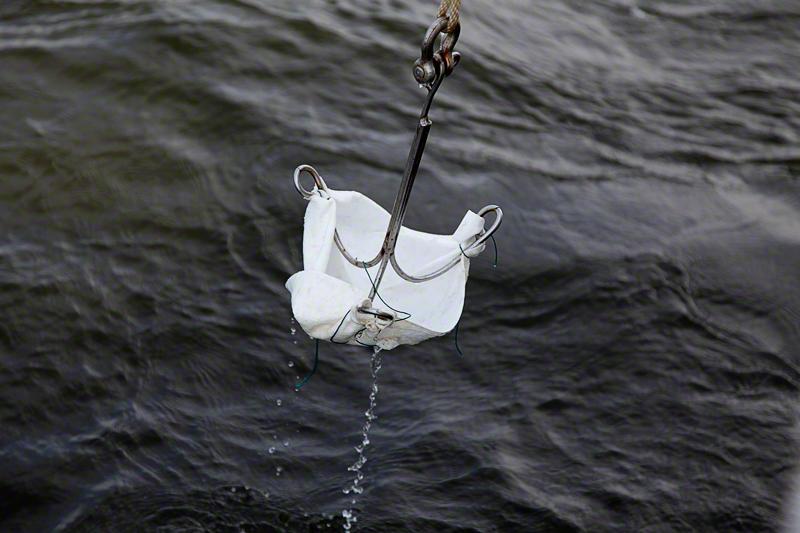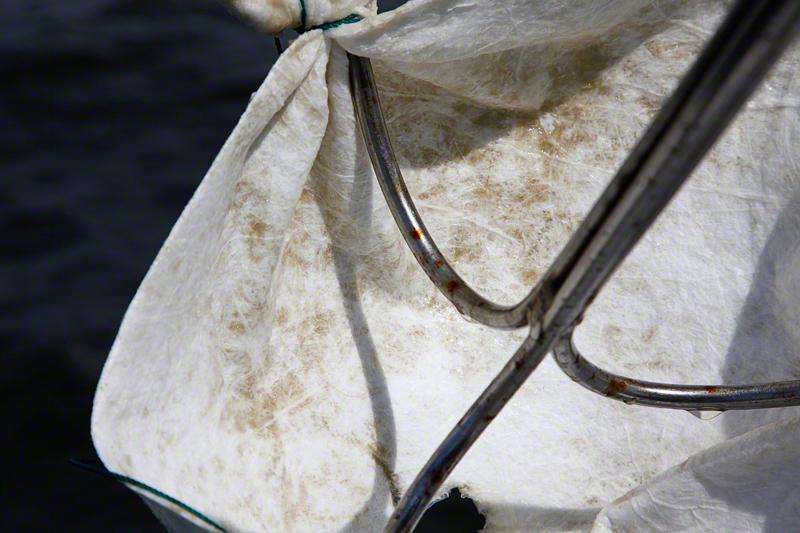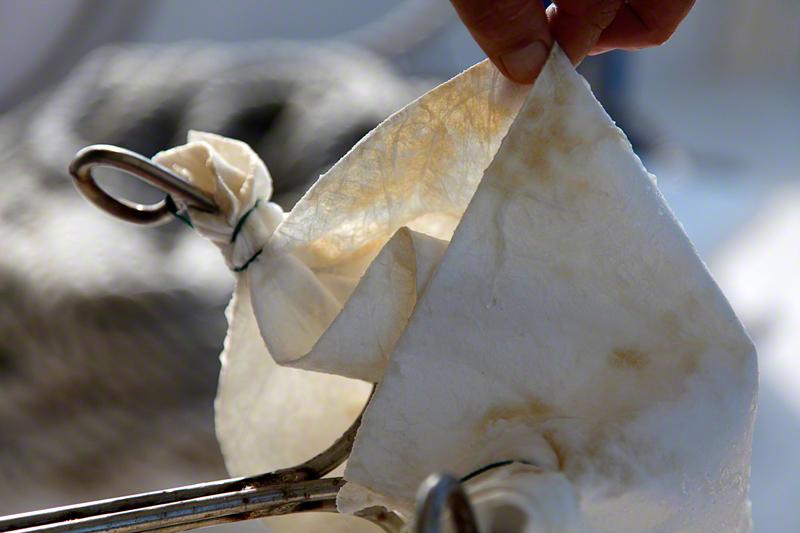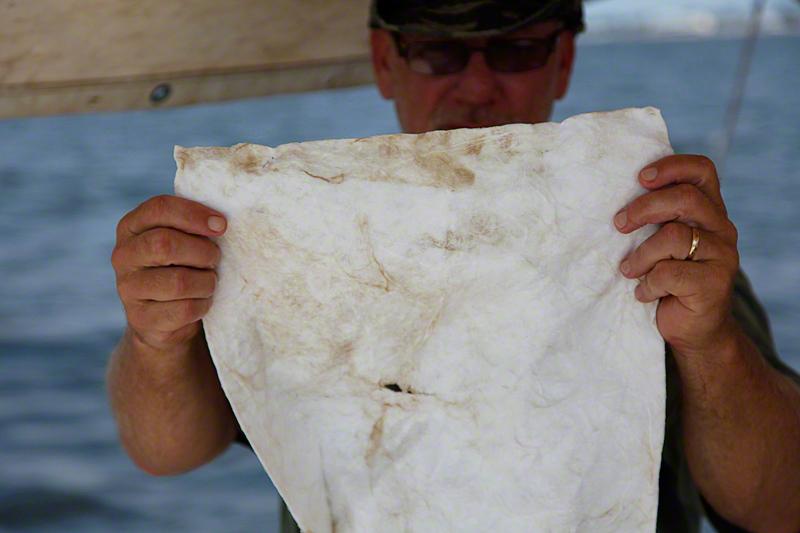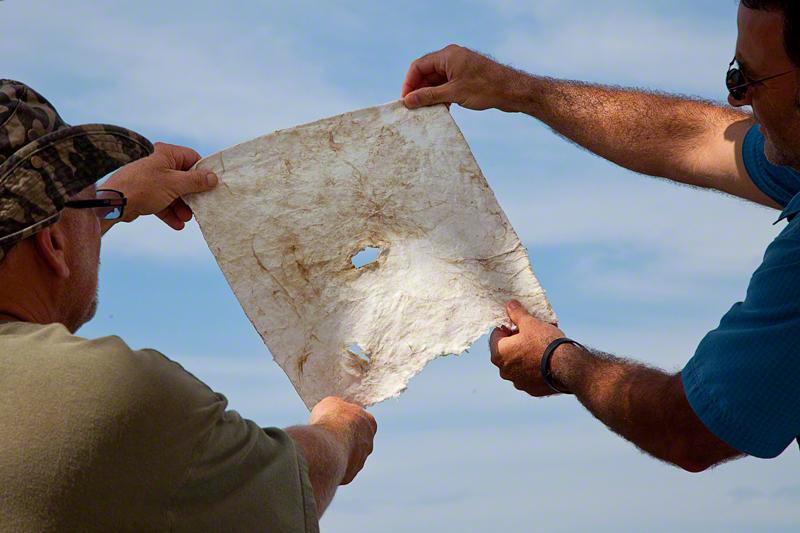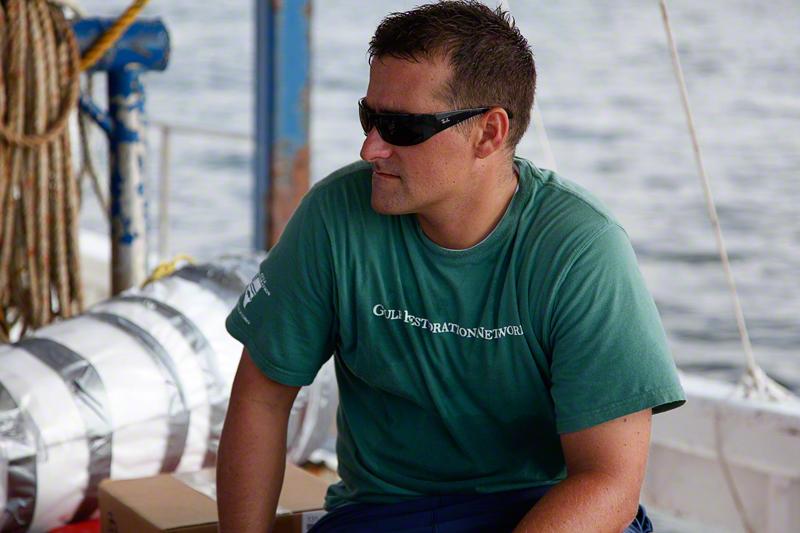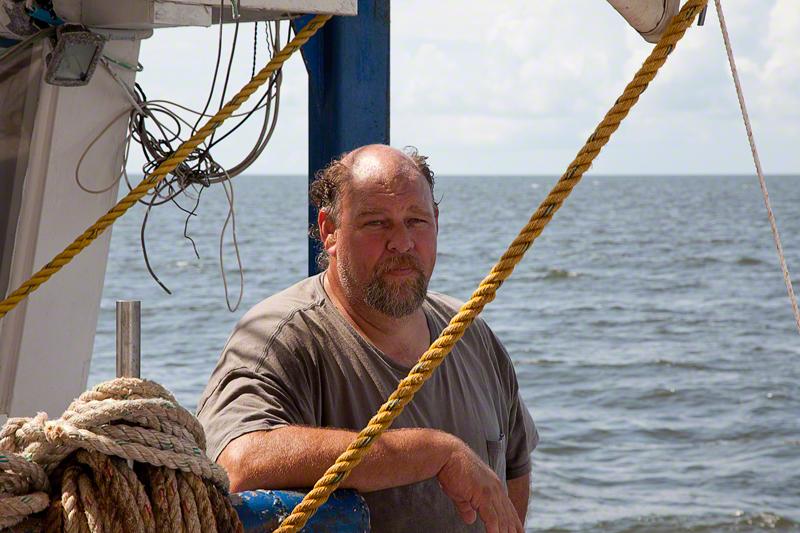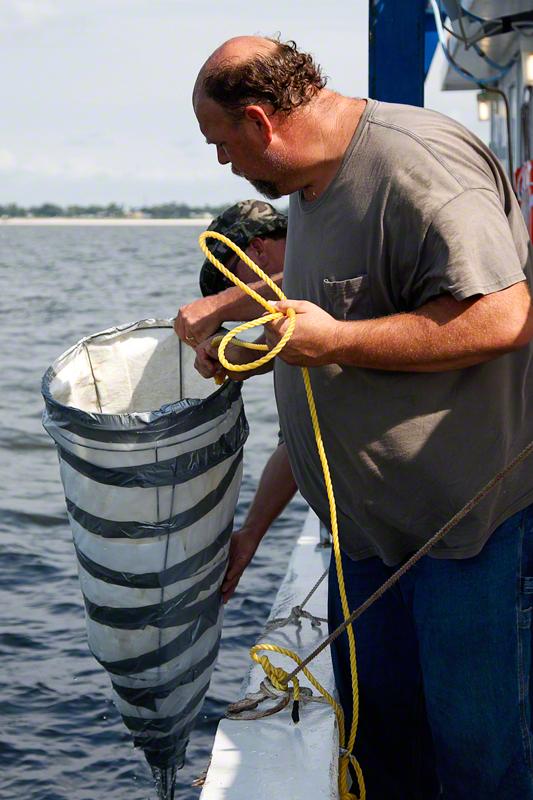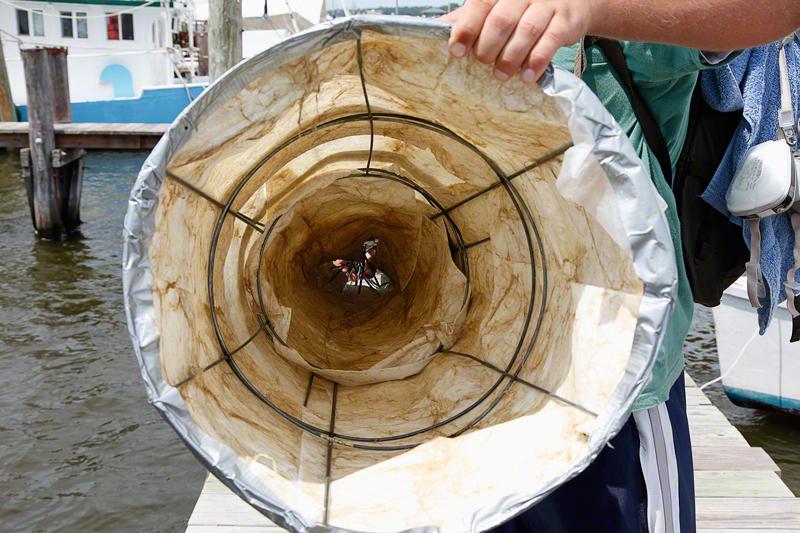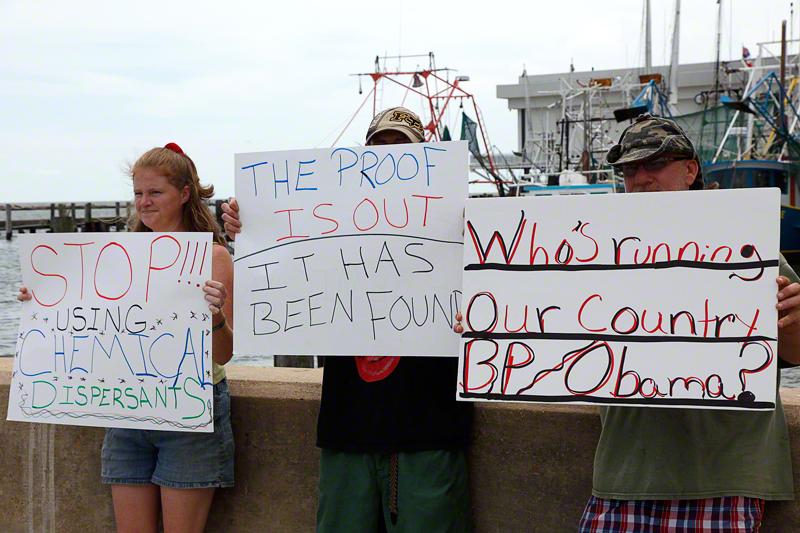Coastal Heritage Society of Louisiana Rain Water Lab Results
Test Date: August 11 2010
Location: Plaquemines Parish, Louisiana - Inland, Belle Chasse

Jo, Kindra & Vcik - Coastal Heritage Society of Louisiana
In efforts to continue our awareness, in addition to our Outreach program to affected families (which are growing in numbers daily) and to expose the truth not being told - we continue our testing in spite of Thad Allens order (signed last week) that all testing must be done under the umbrela of their authority. Sorry... thats a no go. If you would like to help us with our outreach program please participate in our $2 fund drive - just put it in an envelope and mail it to us at
CHSL PO BOX 297 Belle Chasse, La 70037
Of course - more than $2 is welcome but we know times are tough all over and figure that most anyone inspired to help can afford $2 plus a postage stamp!
You can also join us on CHSL Radio - our show airs Tuesday nights at 7pm. Click the link below to listen to our FIRST episode. Hosted by Jo, Kindra & Vick with our special guest President Billy Nungesser. We discuss the rain water, our trip out into the marsh and allot more. Be kind - we are not talk show host... and it was our first go at it.
http://www.blogtalkradio.com/chsl/2010/08/25/coastal-heritage-society-of-louisiana
Join us Tuesday Aug. 31 and call in to discuss the situation!
Just a reminder - we ARE an all volunteer (no salaries) group working hard to protect the people, culture and heritage of Coastal Louisiana. It IS a labor of love for us!
Coastal Heritage Society of Louisiana Rain Water Lab Results
Test Date: August 11 2010
Location: Plaquemines Parish, Louisiana - Inland, Belle Chasse
Summary
The rain water contained heavy metals, chlorides, sulfates, coliform bacteria and this time we also found volatile organic compounds (VOC) that according to our lab “ must be coming from the petroleum oil and it means that the air is contaminated too“.
Detected - Aluminun, Arsenic, Copper, Iron, Manganese, Nickel, Chloride, Sulfates,1.2 dibromo - -3-chloropropane, Ethylbenzene, Hexacholroethane, Naphthalene, 2-nitro propane, styrene, toluene, 1,2,3, trimethylbenene, Butylbenzene and xylenes.
Some of these chemicals do not even have safe EPA standard levels. Some of them fall below the safe EPA levels however it is very important to remember accumulation. This is for testing less than one quart of rain water. The exposure to the rain and steam is much higher usually on a daily basis in Coastal Louisiana. It is also important to remember that people are being exposed not only directly by the rain but by eating the crops that this rain falls on, the livestock drinking this rain water and the exposure daily in the air as well as a thing as simple as walking barefoot on your lawn. These chemicals accumulate in our bodies and since we are all being exposed in so many ways we feel that it is a very dangerous situation.
Butylbenzene
Recommended Exposure Limits for Butylbenzene have not been established.
Eye: May cause mild irritation to the eyes.
Skin: May cause mild to moderate irritation to skin. Prolonged or repeated contact with the liquid may cause defatting of the skin resulting in drying, redness, and possibly blistering.
Inhalation: May cause slight to moderate upper airway irritatancy, with higher exposures causing central nervous system depression, headache, and dizziness.
Ingestion: May be slightly irritating to the gastrointestinal tract. If swallowed, may be aspirated resulting in inflammation and possible fluid accumulation in the lungs.
Toluene
Toluene may affect the nervous system. Low to moderate levels can cause tiredness, confusion, weakness, drunken-type actions, memory loss, nausea, loss of appetite, and hearing and color vision loss. These symptoms usually disappear when exposure is stopped.
Inhaling High levels of toluene in a short time can make you feel light-headed, dizzy, or sleepy. It can also cause unconsciousness, and even death. High levels of toluene may affect your kidneys.
The EPA has determined that the carcinogenicity of toluene can not be classified.
1,2-dibromo-3-chloropropane
The main effect from breathing high levels of 1,2-dibromo-3-chloropropane is damage to the male's ability to reproduce. Studies on workers have shown that men may produce fewer sperm, and eventually become unable to father children. It can also cause headaches, nausea, lightheadedness, and weakness.
Animals breathing high levels of the chemical were not able to reproduce and had damaged stomachs, livers, kidneys, brains, spleens, blood, and lungs. Breathing low to moderate levels also caused damage to the reproductive system. Rats exposed to high levels show an increase in birth defects. It can also cause skin and eye damage from direct contact. The Department of Health and Human Services has determined that 1,2-dibromo-3-chloropropane may reasonably be anticipated to be a carcinogen. Animal studies found cancer of the nose in animals exposed by breathing the chemical, cancer of the stomach and kidney in animals that ingested the chemical, and cancer of the stomach and skin in animals who had skin contact with the chemical.
Ethylbenzene
Exposure to high levels of ethylbenzene in air for short periods can cause eye and throat irritation. Exposure to higher levels can result in dizziness. Irreversible damage to the inner ear and hearing has been observed in animals exposed to relatively low concentrations of ethylbenzene for several days to weeks. Exposure to relatively low concentrations of ethylbenzene in air for several months to years causes kidney damage in animals. The International Agency for Research on Cancer (IARC) has determined that ethylbenzene is a possible human carcinogen. There are no studies evaluating the effects of ethylbenzene exposure on children or immature animals. We do not know whether children would be more sensitive than adults to the effects of ethylbenzene. We do not know if ethylbenzene will cause birth defects in humans. Minor birth defects and low birth weight have occurred in newborn animals whose mothers were exposed to ethylbenzene in air during pregnancy.
Hexachloroethane
In the United States, about half of the hexachloroethane is used by the military for smoke-producing devices. Another use of hexachloroethane is in pyrotechnics. It inhibits the explosiveness of methane and the combustion of ammonium perchlorate.
Acute Effects:
Hexachloroethane acts primarily as a central nervous system depressant (possibly resulting in mild paralysis) in humans acutely exposed to it and in high concentrations it causes narcosis.
Hexachloroethane is moderately irritating to the skin, mucous membranes, and liver in humans.
Liver and kidney effects have been observed in animals acutely exposed to hexachloroethane by ingestion.
In one study, chronic inhalation exposure of animals to high concentrations of hexachloroethane resulted in neurobehavioral effects in rats and dogs and increased liver weight in guinea pigs.
In rats chronically exposed to hexachloroethane by ingestion or gavage (experimentally placing the chemical in the stomach), kidney effects have been observed.
Reproductive/Developmental Effects:
No information is available on the reproductive or developmental effects of hexachloroethane in humans.
At the highest concentrations, rats exposed to hexachloroethane by inhalation exhibited maternal toxicity.
In rats exposed to high doses of hexachloroethane via gavage, maternal toxicity, a reduced gestation index, a reduction in the number of fetuses per female, and increased fetal resorption rates were observed.
Hepatocellular carcinomas were observed in mice following chronic oral exposure to hexachloroethane.
An increased incidence of renal neoplasms were observed in orally-exposed male rats, but not in females.
EPA has classified hexachloroethane as a Group C, possible human carcinogen.
Naphthalene
If dairy cows are exposed to naphthalene, some naphthalene will be in their milk; if laying hens are exposed, some naphthalene will be in their eggs. Naphthalene and the methylnaphthalenes have been found in very small amounts in some samples of fish and shellfish from polluted waters.
Exposure to a large amount of naphthalene may damage or destroy some of your red blood cells. This could cause you to have too few red blood cells until your body replaces the destroyed cells. This problem is called hemolytic anemia. If your ancestors were from Africa or Mediterranean countries, naphthalene may be more dangerous to you than to people of other origins. These populations have a higher incidence of problems with an enzyme that usually protects red blood cells from damage created by oxygen in the air.
Some of the symptoms that occur with hemolytic anemia are fatigue, lack of appetite, restlessness, and a pale appearance to your skin. Exposure to a large amount of naphthalene, such as by eating mothballs, may cause nausea, vomiting, diarrhea, blood in the urine, and a yellow color to the skin.
Anemia is a common condition in pregnancy that can be due to causes other than naphthalene exposure. However, if you are a pregnant woman and are anemic due to naphthalene exposure, then it is possible that your unborn child may be anemic as well. Naphthalene can move from your blood to your baby's blood. Once your baby is born, naphthalene may also be carried from your body to your baby's body through your milk. When mice or rats breathed in naphthalene vapors daily throughout their lives (2 years), cells in the lining of their noses or lungs were damaged. Some exposed female mice also developed lung tumors. Some exposed male and female rats developed nose tumors.
Based on these results from animal studies, the U.S. Department of Health and Human Services concluded that naphthalene is reasonably anticipated to be a human carcinogen. The International Agency for Research on Cancer (IARC) concluded that naphthalene is possibly carcinogenic to humans.
When mice were fed food containing 1 methylnaphthalene or 2 methylnaphthalene for most of their lives (81 weeks), the gas-exchange part of the lungs of some mice became filled with an abnormal material. This type of lung injury is called pulmonary alveolar proteinosis.
Nitropropane
It is "reasonably anticipated to be a human carcinogen" with extensive evidence of it being carcinogenic in rats. Human exposure to 2-NP is nearly completed from occupational exposure and high concentrations of 2-NO are highly toxic and have produced fatalities (INCHEM, 1992). Initial symptoms include headache, nausea, drowsiness, vomiting, and diarrhea and, in causes of fatalities, hepatic failure was the primary cause of death with lung oedema, gastrointestinal bleeding, and respiratory and kidney failure being contributing factors. 2-NP is highly mobile in the environment, soluble in water, bioaccumulative, and highly evaporative.
Styrene
Styrene is produced in industrial quantities from ethylbenzene, which is in turn prepared on a large scale by alkylation of benzene with ethylene.
The U.S. EPA does not have a cancer classification for styrene, but currently is evaluating styrene's cancer-causing potential through its Integrated Risk Information System program.. The National Toxicology Program of the U.S. Department of Health and Human Services also currently is evaluating styrene's potential toxicity The International Agency for Research on Cancer considers styrene to be "possibly carcinogenic to humans.". Chronic exposure to styrene leads to tiredness/lethargy, memory deficits, headaches and vertigo.
1,2,3, trimethylbenene
Causes mild skin irritation. Repeated or prolonged exposure may irritate the respiratory system. Toxic vapors produced upon heating this material.
Contact with skin, eyes and inhalation of product vapor causes exposure.. Causes mild skin irritation.
Repeated or prolonged exposure may cause eye irritation.
Inhalation of product vapors or mist may cause irritation of the respiratory system. Not Classifiable as a Human Carcinogen. Aspiration into the lungs may cause chemical pneumonia. Contain Aromatic Hydrocarbons
Xylenes
The main effect of inhaling xylene vapour is depression of the central nervous system (CNS), with symptoms such as headache, dizziness, nausea and vomiting. Volunteers have tolerated 100 ppm, but higher concentrations become objectionable. Irritation of the nose and throat can occur at approximately 200 ppm after 3 to 5 minutes. Exposures estimated at 700 ppm have caused nausea and vomiting. Extremely high concentrations (approximately 10000 ppm) could cause incoordination, loss of consciousness, respiratory failure and death. In some cases, a potentially fatal accumulation of fluid in the lungs (pulmonary edema) may result. Symptoms of pulmonary edema, such as shortness of breath and difficulty breathing, may be delayed several hours after exposure.
Liver and kidney damage has been reported in cases of severe xylene exposure. Results of short-term studies on human volunteers indicate that xylenes can cause neurobehavioural effects such as impaired short-term memory and reaction time and alterations in body balance. Symptoms such as headaches, irritability, depression, insomnia, agitation, extreme tiredness, tremors, and impaired concentration and short-term memory have been reported following long-term occupational exposure to xylene and other solvents. This condition is sometimes generally referred to as "organic solvent syndrome".
Historical reports sometimes associate xylene exposure with certain blood effects, including leukemia, which are now known to also be caused by benzene. An increase in menstrual disorders has been reported in women exposed to organic solvents such as benzene, toluene and xylene. Several human population studies have suggested a link between exposure to organic solvents (including xylene) and increased occurrence of miscarriages or birth defects in children. However, in the majority of cases, there was exposure to a combination of solvents at the same time such as toluene and benzene.
Chloride
Toxicity Symptoms are weakness, confusion and coma may result with too much chloride exposure.
Chloride is a binary compound of chlorine; a salt of hydrochloric acid.
elevated levels are associated with acidosis and too much water crossing the cell membrane.
Increased levels of blood chloride (called hyperchloremia) usually indicate dehydration, but can also occur with other problems that cause high blood sodium, such as Cushing's syndrome or kidney disease. Hyperchloremia also occurs when too much base is lost from the body (producing metabolic acidosis) or when a person hyperventilates (causing respiratory alkalosis).
ALUMINUM
Studies have show that high level exposure to aluminum affects the lungs, and causes neurological damage in absorption by the skin.
Studies on mice have found that the absorption of aluminum through the skin causes a greater burden on the body than oral ingestion. Humans also absorb aluminum through the skin: a 2001 study showed that aluminum was still present in blood samples 15 days after one application of aluminum. Consequently, applying aluminum to the skin is a very effective way to get aluminum in your system, and in your brain.
Aluminum was first recognized as a human neurotoxin in 1886 A neurotoxin is a substance that causes damage to nerves or nerve tissue.
The short term symptoms of aluminum toxicity include memory loss, learning difficulty, loss of coordination, disorientation, mental confusion, colic, heartburn,, and headaches. Alzheimer’s is one of the possible long term effects of chronic aluminum exposure.
Manganese
It combines with other substances such as oxygen, sulfur, or chlorine . Manganese can also be combined with carbon to make organic manganese compounds. Common organic manganese compounds include pesticides, such as maneb or mancozeb, and methylcyclopentadienyl manganese tricarbonyl (MMT), a fuel additive in some gasolines.
Manganese effects occur mainly in the respiratory tract and in the brains. Symptoms of manganese poisoning are hallucinations, forgetfulness and nerve damage. Manganese can also cause Parkinson, lung embolism and bronchitis. When men are exposed to manganese for a longer period of time they may become impotent.
A syndrome that is caused by manganese has symptoms such as schizophrenia, dullness, weak muscles, headaches and insomnia. Chronic Manganese poisoning may result from prolonged inhalation of dust and fume. The central nervous system is the chief site of damage from the disease, which may result in permanent disability. Symptoms include languor, sleepiness, weakness, emotional disturbances, spastic gait, recurring leg cramps, and paralysis. A high incidence of pneumonia and other upper respiratory infections has been found in workers exposed to dust or fume of Manganese compounds. Manganese compounds are experimental equivocal tumorigenic agents.
COPPER
Long-term exposure to copper can cause irritation of the nose, mouth and eyes and it causes headaches, stomachaches, dizziness, vomiting and diarrhoea. Intentionally high uptakes of copper may cause liver and kidney damage and even death. Whether copper is carcinogenic has not been determined yet.
There are scientific articles that indicate a link between long-term exposure to high concentrations of copper and a decline in intelligence with young adolescents. Whether this should be of concern is a topic for further investigation.
Industrial exposure to copper fumes, dusts, or mists may result in metal fume fever with atrophic changes in nasal mucous membranes. Chronic copper poisoning results in Wilson’s Disease, characterized by a hepatic cirrhosis, brain damage, demyelination, renal disease, and copper deposition in the cornea.
Jo wuth CHSL
One more Vid for you guys.... of us taking water and air samples Aug 19th out in the marsh!
Disclaimer
These pages are for general reference and awareness purposes only and MUST NOT be relied upon as a sole source to determine matters where life and health are concerned. It is important that you speak to your medical Doctor concerning any health concerns that you may have.
